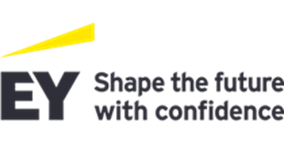Take the 2026 Family-Owned Business Survey
by Gregory Daco
EY-Parthenon Chief Economist
Strategy and Transactions
Ernst & Young LLP
Crosscurrents make for a confusing outlook
- US outlook: The US economy continues to navigate a complex set of crosscurrents, obscuring a clear reading of its underlying momentum. Still, one trend is evident: economic activity is decelerating even as inflationary pressures are reemerging. This tension is likely to persist through the summer, especially with the looming August 1 deadline for new tariffs across most trading partners. While a sharp reversal in imports will mechanically boost Q2 GDP, tariff-induced cost pressures, persistent policy uncertainty, severely curtailed immigration and elevated interest rates are collectively dampening employment, business investment and household consumption. The brunt of the slowdown is falling disproportionately on lower- and middle-income families as well as small businesses, leaving the economic expansion increasingly reliant on a narrower base of large firms and high-income consumers — an inherently fragile growth composition. We expect real GDP growth to slow to just 0.8% year over year (y/y) by Q4 2025.
- The passage of the “One Big Beautiful Bill” removes one major source of policy uncertainty by extending key expiring provisions of the Tax Cuts and Jobs Act (TCJA), thereby averting a fiscal cliff worth 1% of GDP in 2026–27. This clarification in the fiscal outlook offers some support to economic confidence, but we anticipate only a limited near-term lift to activity. On net, the legislation is likely to deliver a 0.2% boost to GDP in 2026, primarily via increased defense and border enforcement spending, and the reinstatement of R&D capital expensing and bonus depreciation for capex. These gains will be partially offset by reduced spending on Medicaid, SNAP and energy incentives. In addition, the $3.4t fiscal cost of the package may exacerbate debt sustainability concerns — fueling upward pressure on interest rates and potentially crowding out private sector investment.
- We anticipate real GDP growth will decelerate from 2.8% in 2024 to 1.5% in 2025 and 1.4% in 2026. While the probability of a recession over the next 12 months currently stands at 35%, the risks to the outlook remain skewed to the downside.
- Labor demand and supply under pressure: Labor market momentum continued to cool in June, with nonfarm payrolls rising by 147,000 and the unemployment rate dipping slightly to 4.1% due to a lower labor force participation rate. Crucially, private-sector job gains slowed to just 74,000, while wage growth moderated to its weakest pace since early 2022. As tariff-induced cost pressures mount and policy uncertainty lingers, we expect hiring to slow further. The average monthly job gains are projected to fall toward 25,000 in Q4 2025, with the unemployment rate drifting toward 4.8% in early 2026. Businesses are likely to remain cautious on workforce expansion amid rising input costs and slowing demand.
- Slowing consumption and housing demand: Despite early signs that tariffs are feeding through to consumer prices, shoppers proved resilient in June, with retail sales rising 0.6% month-over-month — driven by a modest rebound in vehicle sales, clothing and building materials sales. However, beneath the surface, volumes declined for electronics, appliances, furniture and home furnishings, signaling the onset of tariff-related demand erosion. While consumer spending has thus held up — supported by solid income gains — it now faces mounting headwinds from a cooling labor market and renewed inflationary pressures. We expect real personal consumption expenditures to slow from 2.8% in 2024 to just 1.9% in 2025 and 1.4% in 2026. Housing activity is also likely to remain subdued, constrained by persistent affordability challenges.
- Tariff supply-shock to fuel inflation reacceleration: Crosscurrents provided for a confusing inflation picture in June. We estimate that roughly a quarter of the monthly CPI advance in June can be attributed to a tariff-induced impulse via higher prices for household equipment and furnishing, appliances, window and floor coverings, toys, computers, audio and video equipment, and apparel. Still, these were partially offset by declines in new and used car prices owing to strong seasonal adjustments, ongoing disinflation for shelter cost as well as lower hotel and airfare prices — suggesting cooler travel demand. Headline Consumer Price Index (CPI) inflation picked up to 2.7% y/y while core CPI rose a tick to 2.9% y/y. Looking ahead, however, the inflation landscape is set to shift. With higher tariffs imposed on most major trading partners, we expect a renewed inflation impulse to emerge, with headline and core CPI inflation rising toward 3.1% and 3.3% in December, respectively.
- A split Fed unwilling to pre-empt any economic development: The Federal Reserve is widely expected to keep the federal funds rate unchanged at 4.25-4.50% at the late-July policy meeting. Indeed, the latest economic data has left the Fed comfortably numb. The seven policymakers projecting no rate cuts this year will likely view recent data as a vindication of their stance. Meanwhile, the 10 policymakers favoring one or two rate cuts in 2025 will concede that without clearer signs of labor market weakening, further easing remains hard to justify. Paradoxically, political pressure on the Fed will firm the resolve of Fed Chair Jerome Powell and his colleagues to protect the institution’s independence while pressuring long-term yield to the upside. We continue to expect a rate cut in September and another in December as evidence of a labor market cooldown becomes clearer. We project a further 100 basis points (bps) of policy easing in 2026 as economic and labor market conditions deteriorate.

About EY
EY exists to build a better working world, helping to create long-term value for clients, people and society and build trust in the capital markets.
Enabled by data and technology, diverse EY teams in over 150 countries provide trust through assurance and help clients grow, transform, and operate.
Working across assurance, consulting, law, strategy, tax and transactions, EY teams ask better questions to find new answers for the complex issues facing our world today.
EY refers to the global organization, and may refer to one or more, of the member firms of Ernst & Young Global Limited, each of which is a separate legal entity. Ernst & Young Global Limited, a UK company limited by guarantee, does not provide services to clients. Information about how EY collects and uses personal data and a description of the rights individuals have under data protection legislation are available via ey.com/privacy. EY member firms do not practice law where prohibited by local laws.
About EY Family Enterprise
As trusted advisors to ambitious business-owning families, including more than 90% of the world’s top 500 family enterprises, EY teams have the experience and know-how to support the entire family enterprise — family members, their family business, and their family office.
The EY approach to working with family enterprises is anchored in the EY Family Enterprise DNA Model. This model supports both the personal and business performance agendas of family enterprise leaders by pinpointing four key areas of focus to achieve their ambitions: family, values, business and assets. We combine our understanding of these focus areas with decades of experience working with the world’s most entrepreneurial families to create a framework for guided conversations on topics that matter most to family enterprise owners.
EY Family Enterprise professionals can support you in identifying and optimizing the drivers that impact family businesses’ growth and longevity, preserve wealth, and culture, and solidify intergenerational legacies. Family Enterprise Business Services | EY - US
We hope you've enjoyed this article. While you're here, we have a small favor to ask...
As we prepare for what promises to be a pivotal year for America, we're asking you to consider becoming a member.
The need for fact-based reporting of issues important to family owned businesses and protecting a lifetime of savings has never been greater. Now more than ever, successful families and family owned businesses are under fire. That's why Family Enterprise USA is passionately working to increase the awareness of issues important to family owned businesses built on hard work, while continuing to strengthen our presence on Capitol Hill. The issues we fight for or against with Congress in Washington DC include high income tax rates, possible elimination of valuation discounts, increase in capital gains tax, enactment of a wealth tax, and the continued burden of the gift tax, estate tax and generation skipping tax.
Family Enterprise USA promotes generationally owned family business creation, growth, viability, and sustainability by advocating for family businesses and their lifetime of savings with Congress in Washington DC. Since 2007, Family Enterprise USA has represented and celebrated all sizes, professions and industries of family-owned enterprises and multi-generational employers. It is a bi-partisan 501.c3 organization. Family foundations can donate.
#incometax #CapitalGainsTax #R&DExpensing #DontPunishSuccess #GrantorTrusts #StepUpinBasis #likeKindExchanges #AcceleratedDepreciation #EstateTax #Deathtax #wealthtax #taxLegislation #CongressionalCaucus #incometaxrates #repealestatetax #AdvocatingForFamilyBusinesses #FamilyOwnedBusiness #WomenOwnedBusiness @FamilyEnterpriseUSA #FamilyEnterpriseUSA #FEUSA

